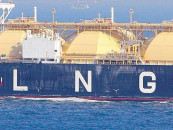Kotri faces medium flood threat
Kotri Barrage is witnessing a medium flood, with flows of around 400,000 cusecs

The flood threat across Pakistan has subsided, with conditions steadily improving, the National Disaster Management Authority reported on Wednesday, as relief and rehabilitation operations in the affected areas continue nationwide.
According to the Flood Forecasting Division (FFD), medium-level floods are only being observed in parts of lower Sindh, while the rest of the country has moved out of red alert.
Kotri Barrage is currently witnessing a medium flood, with flows of around 400,000 cusecs. Authorities expect the flood situation at Kotri to persist until the end of September.
Meanwhile, flows at Guddu and Sukkur barrages are gradually receding, returning to normal levels. On the Ravi River, water levels are falling at Ganda Singh Wala, though low-level flooding continues at Sulemanki and Islam barrages.
Water levels stabilised
On the hydrological front, the Water and Power Development Authority (WAPDA) reported stable river flows and reservoir levels. At Tarbela, inflow in the Indus River stands at 92,100 cusecs with an outflow of 91,700 cusecs, while the water level in the reservoir is 1,550 ft, storing 5.728 million acre ft(MAF).
At Mangla, inflow in the Jhelum River is 17,100 cusecs with an outflow of 9,000 cusecs, and the reservoir holds 7.126 MAF at a level of 1,240.15 ft.
At Chashma Barrage, inflow is 138,300 cusecs with outflow at 132,200 cusecs, the reservoir contains 0.311 MAF at 649 ft.
At Head Marala, the Chenab River shows an inflow of 37,200 cusecs and an outflow of 24,800 cusecs. At Nowshera, inflow and outflow in the Kabul River both stand at 15,700 cusecs.
The combined usable water storage in Tarbela, Mangla, and Chashma reservoirs is 13.165 MAF. WAPDA clarified that inflow and outflow at Tarbela, Chashma, Nowshera, and Mangla are recorded as 24-hour averages, while figures for Head Marala and other points reflect conditions at 6:00 a.m. today.




















COMMENTS
Comments are moderated and generally will be posted if they are on-topic and not abusive.
For more information, please see our Comments FAQ